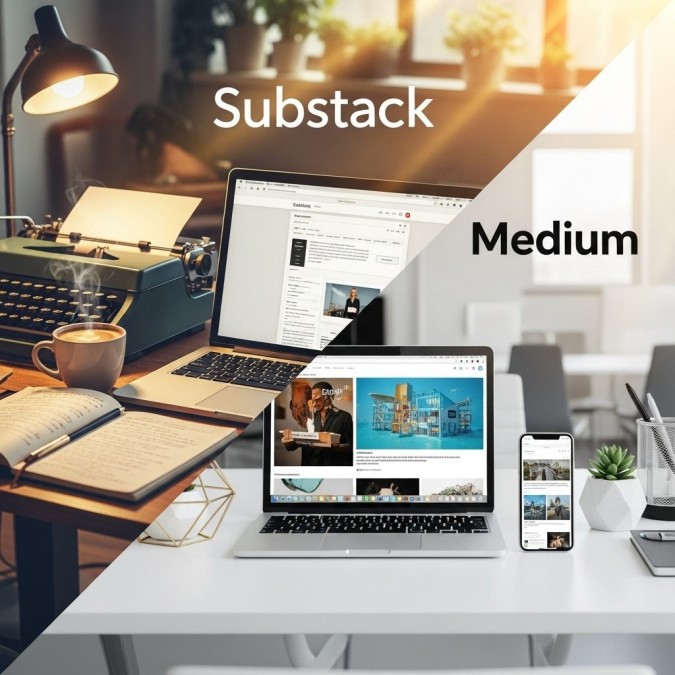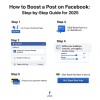✍️ The Return of Blogging via Substack & Medium
Why Long-Form Writing Is Thriving Again in 2027
Section 1: From the Blogosphere to the Algorithm Age — A Journey of Disruption and Rediscovery
In the early 2000s, blogging was the heartbeat of the internet. Platforms like WordPress, Blogger, and LiveJournal gave everyday users a voice, a space to share thoughts, stories, and expertise. Blogs were personal, raw, and often deeply insightful. They built communities, sparked movements, and launched careers.
But as social media rose—first with Facebook, then Instagram, and later TikTok—the blogosphere began to fade. Attention spans shortened. Algorithms rewarded brevity, virality, and visual appeal. Long-form writing was deemed “too slow” for the dopamine-driven scroll culture.
Yet in 2027, blogging is not just back—it’s thriving. And it’s doing so on platforms like Substack and Medium, which have reimagined the blog for a new era of creators, readers, and monetization.
🧭 What Changed?
- Algorithm Fatigue: Users are increasingly disillusioned with algorithmic feeds that prioritize engagement over substance. Many crave depth, nuance, and authenticity—qualities that long-form writing delivers.
- Creator Burnout: Influencers and creators on visual platforms face relentless pressure to perform. Blogging offers a slower, more sustainable creative outlet.
- Subscription Culture: The rise of paid newsletters and memberships has made writing profitable again. Substack, in particular, has empowered writers to monetize directly from their audience.
🧠 The Psychology of the Comeback
Blogging taps into something primal: the need to tell stories, to explain, to reflect. Unlike the fleeting nature of a TikTok or Instagram Reel, a blog post invites readers to pause, think, and engage. It’s not just content—it’s conversation.
Substack and Medium have capitalized on this by offering clean, distraction-free interfaces, built-in distribution, and monetization tools. They’ve made blogging feel modern again—without losing its soul.
Section 2: Substack vs. Medium — Platforms, Philosophies, and Monetization Models
While both Substack and Medium are fueling the blogging renaissance, they serve different audiences and purposes. Understanding their strengths and limitations is key for any creator or brand looking to invest in long-form content.
🧰 Platform Breakdown
| Feature | Substack | Medium |
|---|---|---|
| Core Focus | Newsletters + blogs | Blogging + curated publications |
| Monetization | Paid subscriptions, donations | Partner Program (based on reads) |
| Audience Control | Direct email list ownership | Platform-driven discovery |
| Community Tools | Comments, threads, podcasting | Claps, highlights, responses |
| Ideal For | Independent writers, journalists | Thought leaders, educators |
Substack is built around the idea of creator independence. Writers own their email lists, set their prices, and publish on their terms. Medium, on the other hand, offers a more centralized experience—great for discoverability, but less control.
💸 Monetization in 2027
Substack’s paid subscription model has exploded. Writers can offer free posts, paid posts, or tiered memberships. Some earn six figures annually from loyal subscribers who value their insights. Substack takes a 10% cut, but creators retain full ownership.
Medium’s Partner Program pays writers based on engagement from paying Medium members. It’s less predictable, but offers passive income for evergreen content. Writers can also build publications, collaborate, and syndicate their work.
🧠 Strategic Use Cases
- Educators & Analysts: Use Substack to build niche audiences and monetize expertise.
- Thought Leaders & Creatives: Use Medium to reach broader audiences and establish authority.
- Hybrid Creators: Syndicate content across both platforms, using Substack for monetization and Medium for reach.
In 2027, smart creators treat these platforms not as competitors—but as complementary tools in a diversified content strategy.
Section 3: The Future of Blogging — AI, Community, and the Rise of the Creator-Editor
Blogging in 2027 is no longer just about writing—it’s about building ecosystems. Creators are now editors, curators, and community builders. They use AI to draft, edit, and optimize posts. They engage readers through comments, threads, and newsletters. And they monetize through subscriptions, courses, and digital products.
🤖 AI-Powered Writing
AI tools now assist with:
- Drafting outlines and first drafts
- Translating posts into multiple languages
- Optimizing headlines and SEO
- Analyzing reader sentiment and engagement
This doesn’t replace the writer—it amplifies them. Creators can focus on ideas and storytelling, while AI handles the grunt work.
🧑🤝🧑 Community Building
Substack and Medium both emphasize community:
- Substack offers discussion threads, podcast integration, and subscriber-only chats.
- Medium supports responses, highlights, and collaborative publications.
Blogging is no longer a one-way broadcast—it’s a dialogue. Readers become collaborators, supporters, and even co-creators.
📚 The Rise of the Creator-Editor
In 2027, successful bloggers are more than writers. They’re:
- Strategists: Planning content calendars, segmenting audiences, and tracking metrics.
- Educators: Teaching through posts, courses, and webinars.
- Entrepreneurs: Selling digital products, offering consulting, and building brands.
Blogging is now a business model. And platforms like Substack and Medium provide the infrastructure to scale it.
📝 Final Thoughts: Why Blogging Matters More Than Ever
In a world flooded with noise, blogging offers clarity. It’s a space for deep thinking, honest storytelling, and meaningful connection. Substack and Medium have revived the blog—not as a relic of the past, but as a tool for the future.
Whether you’re a creator, educator, entrepreneur, or brand strategist, long-form writing is your secret weapon. It builds trust, authority, and community. And in 2027, it’s more powerful—and profitable—than ever.
So dust off your keyboard. Your audience is waiting.



